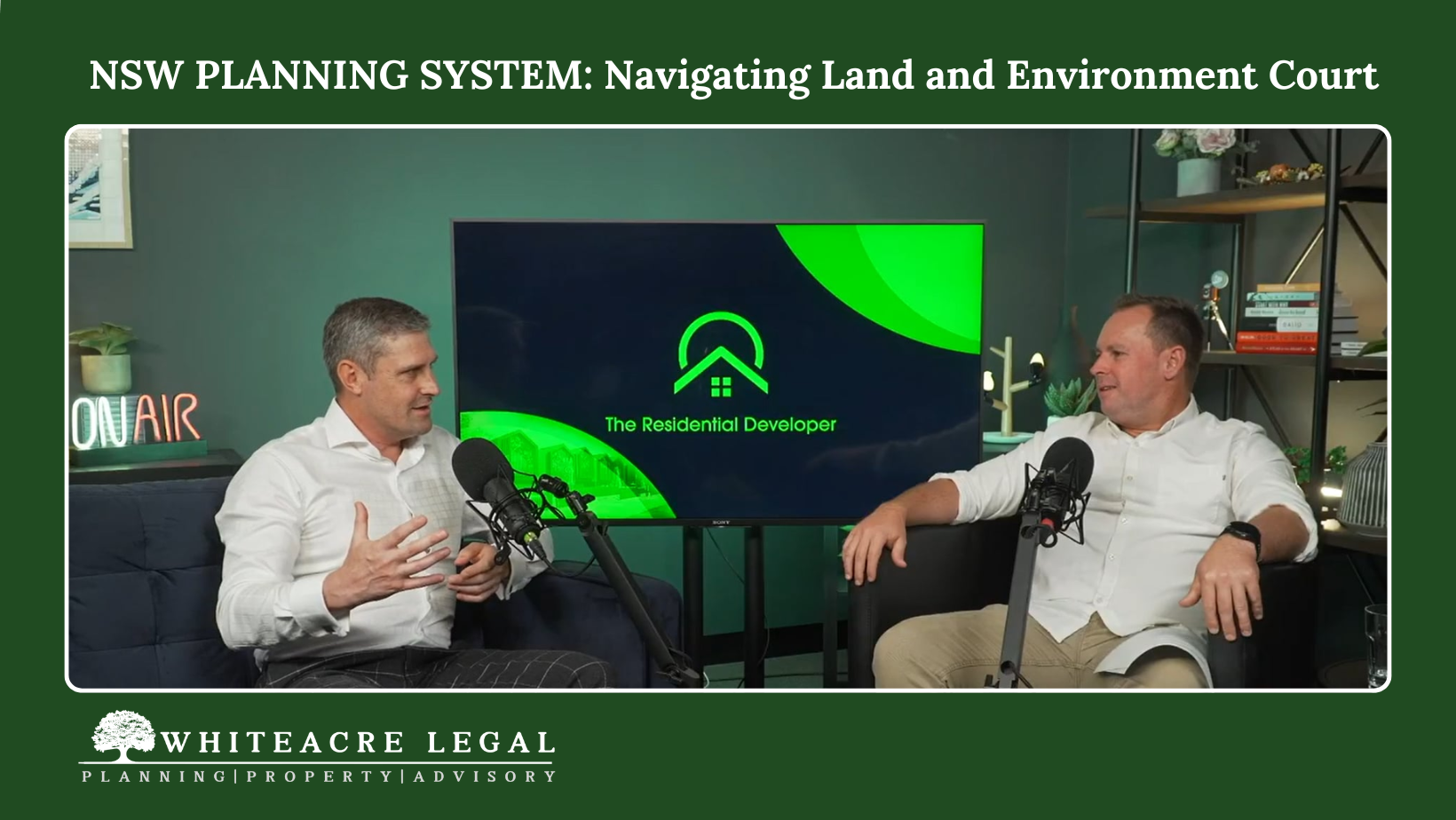Establishing a Biodiversity Stewardship Site: Tax Implications
This article discusses tax implications of establishing a biodiversity stewardship site and generating biodiversity credits.
The NSW Biodiversity Offsets Scheme is a market-based scheme that has been established to help address the loss of biodiversity and threatened species in NSW. It seeks to do so by creating incentives for landowners to improve or maintain biodiversity values as a means of offsetting impacts on other areas.
Landholders can generate biodiversity credits by establishing a biodiversity stewardship site on their land. Biodiversity credits that are generated can then be sold to developers or landholders who require those credits to offset their impact on the environment.
For more information on the establishment of a biodiversity stewardship site and the scheme in general see our article here.
Capital Gains Event occurs on entry into the BSA
Credits are generated on the date a Biodiversity Stewardship agreement (BSA) is signed by both parties. A capital gains tax (CGT) event (type D4) occurs upon entry into a BSA. The capital proceeds on entering a BSA are equal to the value of the biodiversity credits. The ATO considers the full market value of the biodiversity credits as an “asset” received by the landholder for tax purposes.
This can be a major disincentive to landholders planning to establish a biodiversity stewardship site because the CGT event (D4) occurs when the biodiversity credits are generated, not when they are subsequently sold (and payment received). This raises the very real scenario where the tax on the total market value of the biodiversity credits becomes due and payable long before a single biodiversity credit is sold and funds received.
The Department is aware of this issue and has been lobbying the ATO for tax concessions or exemptions. We are not aware of any progress on this front. There are methods to minimise this tax risk, mostly revolving around pre-sales of biodiversity credits prior to the generation of those credits (to cover the TFD and tax liabilities).
Capital Gains Event occurs on sale of biodiversity credits
A CGT event (type A1) also occurs upon the sale or disposal of biodiversity credits. The owner of the credits may make a capital gain or loss depending on the capital proceeds and cost base of the credits. The amount that is required to be paid by the credit owner as a TFD (to effect the registration of the sale/transfer of the biodiversity credits) is included in the cost base (or reduced cost base) of the biodiversity credits.
The cost base for the purposes of CGT event A1 also includes fees paid to consultants and legal and other advisors to assess site biodiversity values, calculate site biodiversity credits, prepare site management plans and provide other advice related to entering into the BSA. The cost base also includes the market value of any property given up to acquire the biodiversity credits (the giving up of rights over the property reduces its value).
Small Business CGT concessions
In some circumstances, the biodiversity credits will be considered to be active assets in the course of carrying on a small farming business and thus qualify for the small business CGT concessions.
Investors beware - profits may be considered income – not capital
All of the above relates to capital gains. But there are situations where ATO will deem the profits or losses derived from the creation and sale of biodiversity credits to be ordinary income derived from a business venture.
The ATO is likely to consider the profits from the creation and sale of biodiversity credits to be income where the purchase of land and creation of a biodiversity site has the character of a commercial transaction. This could happen in circumstances where an entity, like a unit trust or company is established for the purpose of purchasing a property with the intent of creating biodiversity credits so that they can be sold. The venture has a profit-making motive.
The question of whether a business is being carried on is a question of fact and degree and is complex. However, even if the generation and sale of biodiversity credits is not part of the carrying on of a business, the ATO can have regard to “profit from isolated transactions” as ordinary income. Either business income or profits from an isolated transaction can be included in the landholder’s assessable income for that income year.
We are aware of circumstances in which the ATO has deemed that profits derived from the creation and sale of biodiversity credits were considered “isolated commercial transactions” and were therefore assemble income. This can occur where a company or unit trust is formed with the specific intent of buying rural property to establish a biodiversity stewardship site and generate and sell credits. Further, because the ATO deems that the biodiversity credits are a tradeable asset and readily convertible to cash, the money value of the biodiversity credits issued on entry into the BSA will form part of the entity’s assessable income in the income year that the credits are received. This could occur even though a single credit has not yet been sold.
There is some minor consolation. Due to anti-overlap provisions, the capital gains for that entity (mentioned above) under CGT events D4 and A1 would be reduced to the extent that profit from the creation and sale of the biodiversity credits has already been assessed as the entity’s ordinary income.
Small consolation to an entity receiving a hefty tax bill in the year the credits are generated if no cash has yet been realised from the sale of those biodiversity credits.
Investors and commercial entities seeking to engage in the biodiversity offset scheme with the intent of realising a profit would be well advised to obtain specialist tax and legal advice with regard to their tax liabilities and structuring.
GST is payable on the sale of credits
For the purposes of GST, the sale of credits is a taxable supply of goods. This means that the owner of the credits is registered for GST, or should be registered for GST and the biodiversity credit price should include GST that the credit seller needs to remit to the ATO.
Income received under the ongoing payments is taxable income
Landholders who establish a biodiversity stewardship site are required to perform, and receive payments to perform, management actions to manage the stewardship site.
Payments made to landholders for the ongoing management of a biodiversity stewardship site are a contractual payment for the performance of services and will be considered ordinary income and assessable for income tax purposes. Landholders may be able to claim deductions.
NSW Land Tax exemption
Finally, some good news.
Land that is the subject of a biodiversity stewardship agreement is exempt from land tax under s 10(1)(p) of the Land Tax Management Act 1956.
Disclaimer
The contents of this article are a general guide and intended for educational purposes only. Landholders should seek their own taxation advice before entering into or considering establishing a biodiversity stewardship site.
Determination of the types of issues discussed in this article is complex and often varies from case to case and involves an understanding of matters of fact and degree. Opinions on those matters can vary and be matters on which reasonable minds may differ.
DO NOT RELY ON THIS ARTICLE AS A SUBSTITUTE FOR COMPETENT LEGAL ADVICE.
Require further assistance? please do not hesitate to call us on (02) 9145 0900 or make an enquiry below.
Browse by categories

Servicing all of NSW, Whiteacre provides expert property law and planning and environment law advice and assistance.
✓ Planning Law Advice
✓ Land and Environment Court Appeals
✓ Voluntary Planning Agreements and Contributions
✓ Development Control Orders and Enforcement
✓ Property Development Advice and Due Diligence
✓ Title Structuring
✓ Easements and Covenants
✓
Strata and Community Title legislation
Book an initial consultation through our website with our planning law solicitor. Whether it's about planning and environment law or property law, you can approach us and discuss your matter to make sure we are a good fit for your requirements.


































